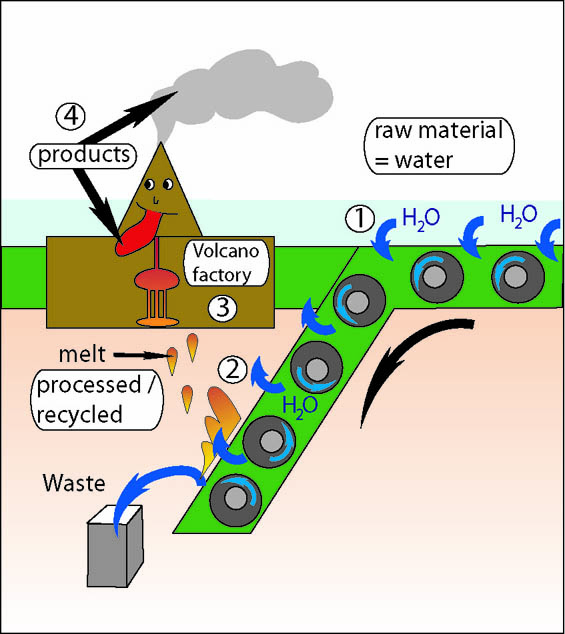
Where Did All The Water Go?
In Iceland there is a place called the Blue Lagoon – an amazing complex of milky blue, lusciously warm bathing (swimming) pools amongst the black basalt rocks. The mineral rich water is produced by the geothermal electricity industry, which brings the superheated water up from its subterranean (underground) prison. This water has been on a journey beneath the surface of the Earth. It has been taken down, heated, pressurized (squeezed) and then allowed to escape back to the surface by human activity. But in many places of the World this happens as a natural process, resulting in hot springs, like the geysers and hot springs in Yellowstone National Park, USA. So how does the water make this journey? Lets investigate!
The seafloor of the oceans is a muddy mixture of material blown or washed off the continents (large land masses), volcanic ash and the remains of small, dead, marine plants and animals. This material is saturated (completely full) of seawater. More and more layers are laid down on top and the weight increases on the lower beds, squeezing out some of the water, but some is always left behind. All the cores we bring up onto the deck of the Joides Resolution are wet. Geologists on the ship are investigating the amount of water in the rock, and its chemistry (what is dissolved in it).
Water in ocean sediments can be incorporated (taken into or inlcuded) deeper still inside the Earth by riding on the back of a subducting plate when it dives underneath another slab of crust. (1) As this wet material descends it gets heated up and put under increasing pressure. Just like water in a kettle, it would like to turn to steam, but the pressure stops it expanding 9getting bigger) to gas, so it is held as super-heated fluid within the rock.
Deeper still some of the rock begins to melt and rise slowly back to the surface, carrying the water with it. (2) Eventually the rock emerges at the seafloor as volcanic material. There are lava flows and explosive ash and pumice, big blocks can be thrown into the air, and eventually a volcanic cone can grow big enough to poke out of the water. (3) But all this time, the hot water also escapes – either through undersea volcanic vents, or hot springs on land, or as water vapour and steam from the volcano. (4)
The Joides Resolution is drilling very close to some undersea volcanoes and the cores are full of volcanic ash and pumice which means the magma was very explosive instead of runny. Magma explodes when the water in it suddenly turns to steam and expands very quickly, just like the gas in a bottle of carbonated (fizzy) drink bursts out of the top of a bottle when you take the top off!
When we think of water and its effect on us, we tend to only think about those parts that we can see – the rivers, seas and rain. But those parts that are hidden from view are an important part of how the whole Earth works – and we need to understand it because it can affect us as a bad thing through volcanic eruptions, but also as a good thing by providing free hot water!
(My thanks to Julia Ribeiro for producing the illustration!)